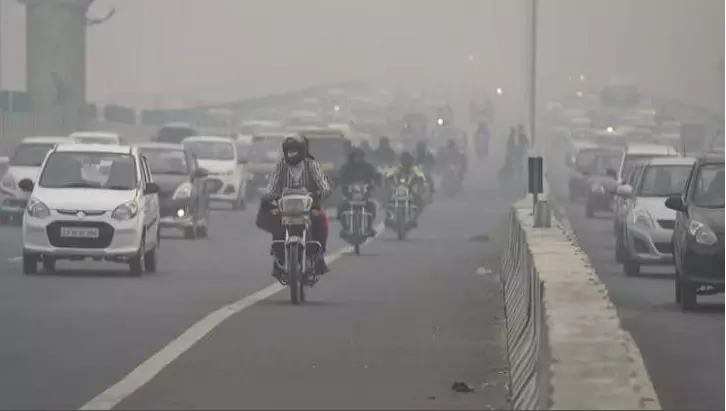
Delhi's air quality plunges further into very poor category

New Delhi, Nov 1 (PTI) A layer of haze hung over Delhi and its surrounding areas on Wednesday, with the capital's air quality slipping deeper into the 'very poor' category primarily due to a dip in temperature and calm winds during the night.
The city's Air Quality Index (AQI) was recorded at 372 at 10 am, the highest so far this season. The 24-hour average AQI was 359 on Tuesday, 347 on Monday, 325 on Sunday, 304 on Saturday and 261 on Friday.
Several areas within the city such as Nehru Nagar (402), Sonia Vihar (412), Rohini (403), Wazirpur (422), Bawana (403), Mundka (407), Anand Vihar (422), and New Moti Bagh (435), experienced a drastic deterioration in air quality, plunging into the 'severe' category.
The concentration of PM2.5 -- fine particulate matter which can penetrate deep into the respiratory system when inhaled and trigger respiratory problems -- at these places was six to seven times the safe limit of 60 microgrammes per cubic metre.
The AQI was 280 in neighbouring Ghaziabad, 318 in Faridabad, 254 in Gurugram, 333 in Noida and 372 in Greater Noida.
An AQI between zero and 50 is considered good, 51 and 100 satisfactory, 101 and 200 moderate, 201 and 300 poor, 301 and 400 very poor, and 401 and 500 severe.
According to a numerical model-based system developed by the Indian Institute of Tropical Meteorology (IITM) in Pune, vehicular emissions (11 per cent to 16 per cent) and stubble burning (seven per cent to 16 per cent) currently stand as the two major contributors to the city's air quality.
Starting Wednesday (November 1), only electric, CNG and BS VI-compliant diesel buses will be allowed to operate between Delhi and the cities and towns of Haryana, Uttar Pradesh and Rajasthan falling within the NCR, according to directions issued by the Commission for Air Quality Management, a statutory body responsible for formulation of strategies to reduce pollution in Delhi-NCR.
In an effort to reduce pollution levels, the Centre announced in April 2020 that all vehicles sold in India must comply with the Bharat Stage VI (BS-VI) emission standards.
The Bharat Stage emission standards set legal limits on the amount of air pollutants such as carbon monoxide and particulate matter that vehicles in India can emit. These standards focus on improving emission control, fuel efficiency and engine design.
As vehicle manufacturers provide vehicles that meet these new norms, oil companies supply fuel that adheres to the BS-VI standards, known as the world's cleanest fuel.
The IITM's Decision Support System (DSS) also showed that pollution sources in Gautam Budh Nagar, Uttar Pradesh, are responsible for up to 14 per cent of the air pollution in the capital.
Delhi's air quality is expected to remain 'very poor' for a few more days, according to the Centre's Air Quality Early Warning System for Delhi. PTI GVS GVS DV DV

